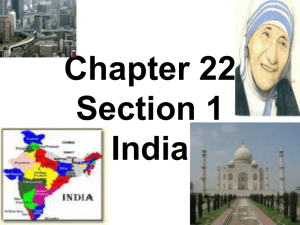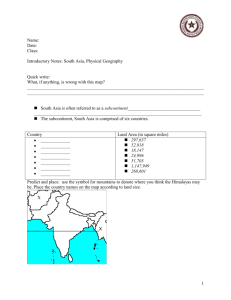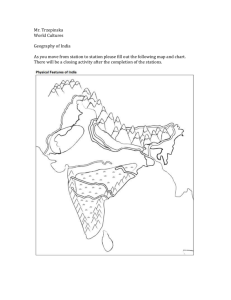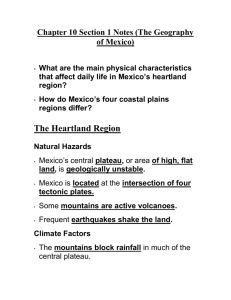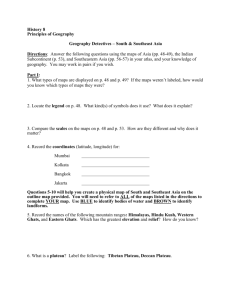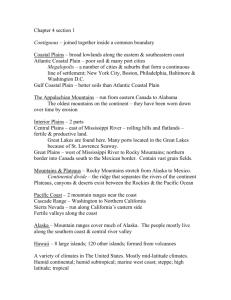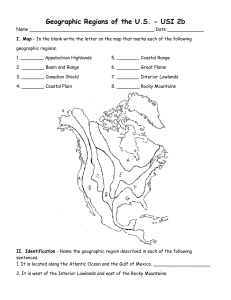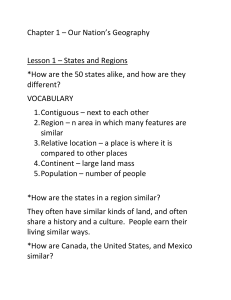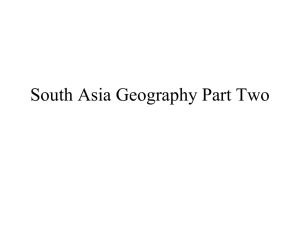Exploring India`s Diversity Geography and Map Study
advertisement
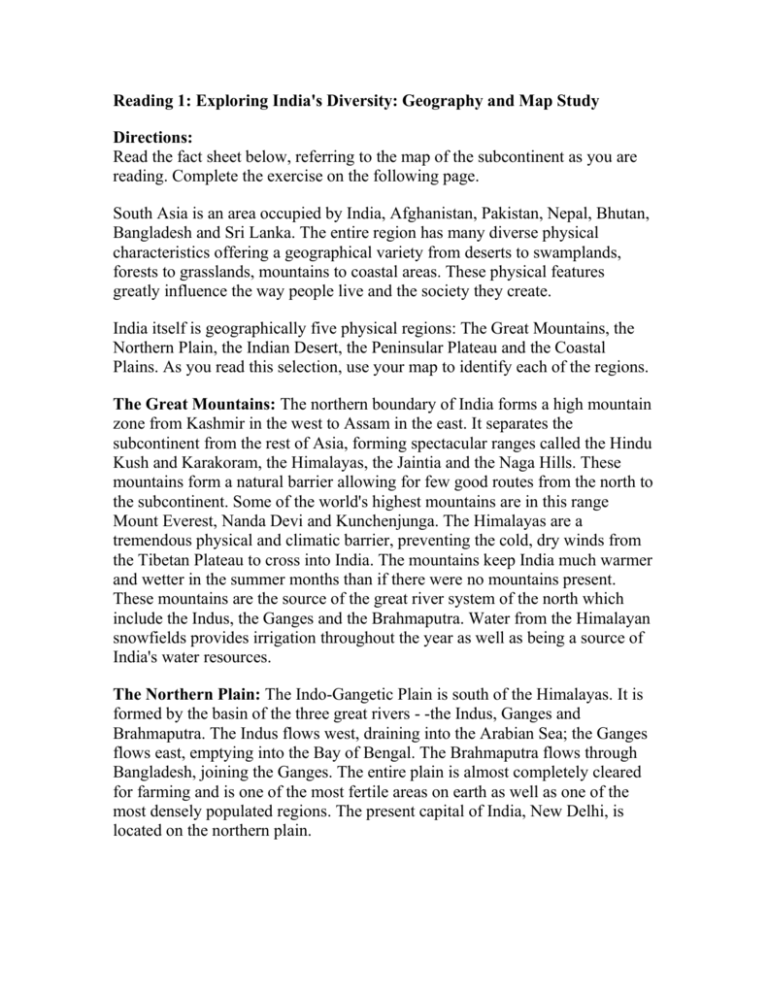
Reading 1: Exploring India's Diversity: Geography and Map Study Directions: Read the fact sheet below, referring to the map of the subcontinent as you are reading. Complete the exercise on the following page. South Asia is an area occupied by India, Afghanistan, Pakistan, Nepal, Bhutan, Bangladesh and Sri Lanka. The entire region has many diverse physical characteristics offering a geographical variety from deserts to swamplands, forests to grasslands, mountains to coastal areas. These physical features greatly influence the way people live and the society they create. India itself is geographically five physical regions: The Great Mountains, the Northern Plain, the Indian Desert, the Peninsular Plateau and the Coastal Plains. As you read this selection, use your map to identify each of the regions. The Great Mountains: The northern boundary of India forms a high mountain zone from Kashmir in the west to Assam in the east. It separates the subcontinent from the rest of Asia, forming spectacular ranges called the Hindu Kush and Karakoram, the Himalayas, the Jaintia and the Naga Hills. These mountains form a natural barrier allowing for few good routes from the north to the subcontinent. Some of the world's highest mountains are in this range Mount Everest, Nanda Devi and Kunchenjunga. The Himalayas are a tremendous physical and climatic barrier, preventing the cold, dry winds from the Tibetan Plateau to cross into India. The mountains keep India much warmer and wetter in the summer months than if there were no mountains present. These mountains are the source of the great river system of the north which include the Indus, the Ganges and the Brahmaputra. Water from the Himalayan snowfields provides irrigation throughout the year as well as being a source of India's water resources. The Northern Plain: The Indo-Gangetic Plain is south of the Himalayas. It is formed by the basin of the three great rivers - -the Indus, Ganges and Brahmaputra. The Indus flows west, draining into the Arabian Sea; the Ganges flows east, emptying into the Bay of Bengal. The Brahmaputra flows through Bangladesh, joining the Ganges. The entire plain is almost completely cleared for farming and is one of the most fertile areas on earth as well as one of the most densely populated regions. The present capital of India, New Delhi, is located on the northern plain. The Indian Desert: The Thar Desert lies southwest of the Indo-Gangetic Plain, from the southern edge of the Punjab through northwestern Rajasthan. This desert averages 6 inches of rain a year or less. The Peninsular Plateau: This plateau occupies the greatest part of India - a tilted tableland of low rolling hills, great river valleys and uplands. In the central area, the rich black soil retains water but in the regions where this soil does not occur water is a constant problem. Much of India's mineral wealth is found on the plateau. The southern part of the plateau is called the Deccan Peninsular. The Dec ' can tilts to the east, declining in elevation and containing river systems which form fertile deltas when they reach the Bay of Bengal. The Western and Eastern Ghats: These Ghats (hills) rise abruptly on either side of the Deccan Peninsular. The Ghats are a barrier to transportation and rainfall. The narrow coastal plains bordering the Arabian Sea and the Bay of Bengal lie beyond the Ghats. The Coastal Plains: The Western Coastal Plain is much narrower than the Eastern Coastal plain and much wetter.
